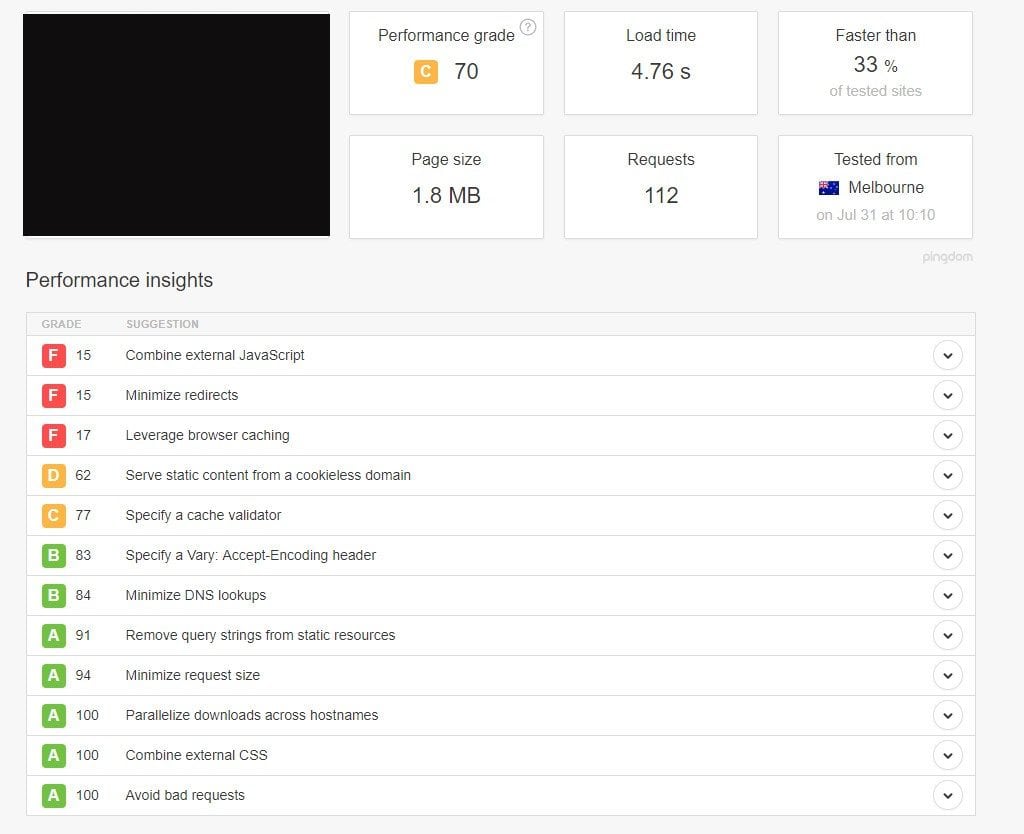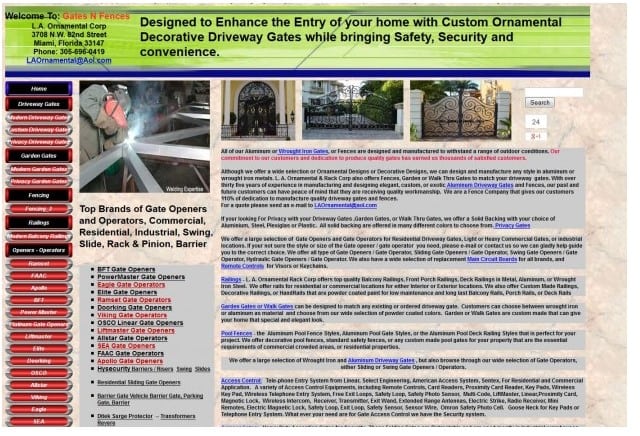Are you wondering why your website is not generating as many leads as you expected despite having a website that LOOKS great?
While the design, look and feel of a website are extremely important, they’re not the sole factors that are going to get you more business.
Some beautiful looking websites are terrible at converting visitors into leads! Building a high converting website requires paying attention to some specific aspects of the design and content. Often these factors are ignored.
Whether your business has problems getting leads from your online marketing, or you are looking to build a website that will cause real business growth, here are a few things you should keep in mind to make your website a high converting one.
1. Include an Initial Call-to-action
Calls-to-action are a suggestion or prompt that tells a visitor what to do once they land on your site.
They are crucial to turning website visits into conversions. It is a good idea to make the call-to-action easily available to the visitor, so they don’t have to hunt around for it.
As soon as a visitor lands on your site, having an initial call-to-action near the top of your page gives the visitor an immediate suggestion of the action that they can take to get what they are looking for.
While you may think that having a call-to-action right at the top is too direct, especially if your product or service is not something a visitor would buy on a whim, it doesn’t have to ask them to “buy now”.
Your call-to-action could simply be a subtle suggestion like ‘Learn more’ that takes the visitor to the corresponding page and gives them more information.
Having this initial call-to-action increases the chances of the visit turning into a conversion over a course of time.
Alternatively, if you think your product/service is something a visitor can buy or enquire about right away, you could have a more direct approach to your call-to-action like ‘Buy now’ or ‘Call us now’.
Keep in mind that when someone is looking for a product or service on a website, chances are they looking for a service right away, and they don’t want to waste their time looking through your website to find a call-to-action. It is up to you to make this easily available to them, nice and clear.
Here is a really good example of an initial call-to-action on Netflix’s home page:
2. Optimise Your Page Speed
When it comes to website speed, Google’s mantra is ‘Speed equals revenue’.
According to research by Akamai, most people expect a site to load in under 2 seconds and most people who have trouble with a website are likely to not return back to the site.
The increase in loading time has an opposite correlation with the number of conversions, i.e. as the page loading time increases, the more likely your visitors are to leave your site and find another one that loads faster.
So, it is extremely important that your website loads in at least under 6 seconds and eventually your aim should be to make it load in about 2 seconds.
There are plenty of factors that contribute to making your website load faster. To begin with, you could test your website load time at one of the many websites that offer this service like Pingdom speed test or GTmetrix.
They not only tell you what your website load time is, but also give you a list of factors that are slowing your website down and you could implement their suggestions to improve website speed. Keep in mind that these suggestions are quite technical, so it will be good to get someone technically sound to implement these suggestions.
Some basic factors that can help with speed optimisation are GZip file compression, leverage browser caching, optimising images and optimising your website code.
It is also important to make your mobile site fast, especially with Google’s recent update on ‘mobile first’ indexing. This means that Google will decide the rank of your website on search results depending on how quickly your mobile site loads.
With more than 50% of searches that are happening on mobile devices according to Google’s official statements, mobile optimisation has become a decisive factor for Google to index your site and an important factor that online marketers are looking into while building a site.
This means you should make sure to use a website building platform like WordPress that is more mobile friendly than something like Weebly, that doesn’t give you an option to make mobile edits.
3. Display Your Phone Number Clearly in the Header
The easiest way to turn a visit into a conversion is to have someone call you. There’s nothing like a phone conversation that gives you and your team a great opportunity to turn a prospect into a customer with your amazing marketing skills. You also have a chance to personalise a solution or service for them, and therefore give them a great customer experience.
This is why it is important to mention your phone number clearly on your site and the higher up you mention it on a page, the easier you are making it for a customer to call you. Ideal practice is mentioning your contact details right in the header, so someone can call you right away if they want to.
As we now know, Google says about 50-60% of search queries are through mobile devices and most people search for things ‘on the go’. So, it is important to not only have your phone number on your home page, but also make it clickable, so the visitor doesn’t have to retype it in their phone.
4. Add Calls-to-Action at the End of Your Blogs
Nowadays, people blog about everything. From suggestions, opinions, solutions to information — exactly what people look for every day.
Blogs are an effective tool to generate traffic to your website. To begin with, you get to generate relevant content that your prospective and your existing customers are looking for, therefore satisfying a need. This helps get more people to your site.
While generating content, make sure to find topics that have a high number of searches and are recent. Many websites out there give you information on hot topics, such as Answer The Public, Buzz Sumo and these are absolutely free! You just have a type in a keyword, and you will get a list of topics to write on.
However, too many blog sites make the mistake of writing a lovely article, and then not providing any call to action at the end. If you want your website visitors to do something when they finish reading … make it easy!
Provide a link near the bottom of your article that gives your readers the next step – maybe it’s to download a PDF guide that is relevant to the article topic, or simply to get in touch with you – whatever you want them to do, make it easy.
Here is an example of a strong call-to-action at the end of a blog article page by Guardian:
However, you don’t have to necessarily have such a strong call-to-action. You could include a subtler call-to-action like this:
5. Decrease distractions
When people visit your website, your aim is likely to be that they will buy something or become a lead. Sometimes people who intended to buy, or make contact, leave without doing so. Why?
According to Chris Goward, an expert on marketing optimisation, one of the reasons a person doesn’t convert on your website is DISTRACTIONS! It simply means you could be driving your visitors away from your primary goal.
Good sites reduce distractions and lower anxiety. Too much information, a bombardment of call-to-actions, unnecessary pop-ups that annoy your customers, over designed elements, or too many colours are things that people don’t like.
Here is an example of what your site shouldn’t look like –
Your aim should be to keep it simple, have nice big images, keep your content crisp and clear, have two or three brand colours, and have a clear navigation bar that makes it easy for people to navigate through your site.
Whereas Apple has mastered the art of a distraction-free site:
When it comes to specific conversion pages, such as a shopping cart in an ecommerce site, removing distractions including the navigation bar, has been shown to increase conversions.
6. Use Easy to Read Formatting Including Narrow Widths
While we have already covered the importance of having clear and crisp content, it is also important that you present this content in an ‘easy to read’ formatting.
This simply means, lots and lots of paragraph breaks, enough spacing between lines and narrow widths of content.
If you have content that goes all the way from the left to the right side of the screen, the reader is more likely to lose interest in what you have to say. Having narrow widths of content makes it easier on the eye to read through the content and also retains concentration and interest.
7. Closing Call-to-Action
A closing call-to-action is even more important than your initial one and should appear near the bottom of your page.
Let’s say a visitor gets to your website, sees the initial call-to-action and decides that they want to know more about what you have to offer. They click and then browse through the entire page, reach the bottom and … nothing. Chances are they’ll hit the “back” button and won’t convert to a lead.
When a visitor reaches the bottom of the page, you want to provide them with a suggestion as you did at the top of the page. This gives them direction and to buy or call you.
Don’t expect them to scroll all the way back up to perform your desired call-to-action. Make it easy for them to take the next step.
8. Decrease friction on contact forms
Contact forms are an easy and direct way for customers to connect with you. But if we want more people to fill in a form, it is very important to keep it simple. You don’t want a long list of questions that makes someone who wants to fill in a form abandon it and leave halfway through.
So, make sure that you have as few form fields as possible. Additionally, make sure that you provide help by offering dropdowns and options to pick from wherever possible, so they don’t have to type everything out.
The quicker someone is able to fill out your form, the more likely they are to contact you.
If you have a form that has a lot of fields, use a multi-step form that only shows the user one section at a time. This will increase conversions, while still giving you the content you need.
In today’s digital world, having a good website, is crucial to online marketing. By implementing these conversion optimisation techniques, you will be able to increase the number of website visitors who turn into website leads or sales.
If you are confused about any of these things or need advice on how to go about making your website better, you can get in touch with an online marketing agency to help you make your website a successful one.

















